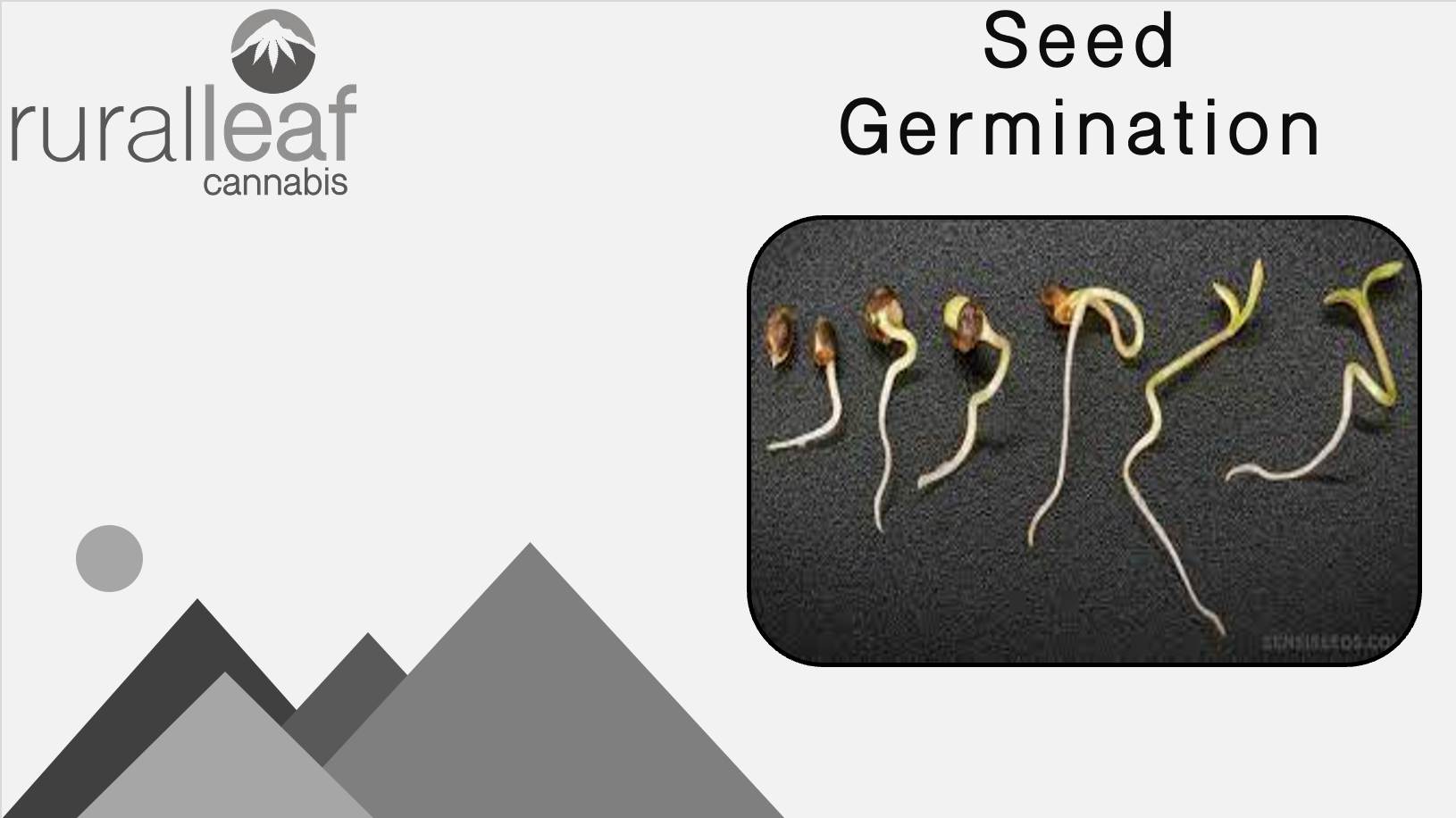Wanting to grow Cannabis? Let’s start with seed germination.
What is “germination”?
it is the process that a seed undergoes when waking up from its dormant state. When a seed germinates its root will break through the seed shell and continue to grow. This root is called a tap root. This process can take 2-3 days if conditions and seed health are optimal, but it can take longer in poor conditions. Once the tap root reaches 2-3cm or ½ an inch in length, it is ready to be placed carefully with the tap root pointing down, in to soil or a growing medium.
For a garden to exist, seeds must “germinate”. But how do you germinate a cannabis seed. There are a few key things that one can do to help a seed germinate successfully, but if you ignore these key things you may have poor germination or no germination. Theses three key things are moisture, warmth and darkness. The optimal temperature for germination is 17-23 degrees Celsius.
Here are three common germinating methods
Paper towel in a plastic sandwich bag
Probably one of the most common methods of germination. Take two pieces of paper towel and get them damp, but not soaking wet as you want to ensure some air can also get to the seed. Place one sheet of damp paper towel on a flat surface. Space your seeds a few centimetres apart before placing the second piece of paper towel over top of them. Place the paper towels with the seeds into a sandwich bag, left open and place it in a dark place. Keeping in mind it should be kept around 20-23 degrees Celsius. When the white root tips reach 2–3mm, move the seeds carefully to soil or a growing medium.
Directly into soil
Start by filling small pots with a premium-quality soil that has been soaked in water. Many growers choose to use coco coir and peat and will also lace the water with a root stimulator. In each pot make a hole roughly 10–15mm deep in the top surface of the soil. Remove the seeds from their packet and place a seed into the hole. Loosely cover the seeds, but do not compress the soil above the seed to firmly. If the soil is compress to firmly, it will cause the root to struggle to penetrate the soil, slowing plant growth. Lightly water the top of where you placed the seed so that your growing medium stays moist. Make sure to maintain a consistent moisture level and do not let the soil around your seeds dry out.
Your growing pots will need to be placed in a damp climate that is within the temperature range listed above. After 4–10 days, you should see a young seedling sprout, while the roots will have begun to develop underneath the soil. The entire plant and its soil can now be transplanted to a larger pot, where normal growing routines should start.
Stone wool cubes
Soak the stone wool blocks in the same way you would a soil medium. The wool will retain the moisture and prevent the need to water during the early stages of germination. After the wool blocks are soaked, stick them in a plastic tray that also has a lid, and place it in a dark place around 20-23 degrees Celsius.
The lidded plastic container will create your seeds’ own mini climate, ensuring that you will have created a self-perpetuating supply of moisture. With no need to touch the seeds again until they are ready to be transferred to your final growing medium as a young seedling. Germination will take a few days then, two or three weeks after germination, your seedlings should be ready for their new home. You have two options; transplant them into soil pots, or taking on the challenge of Hydroponics. When the seedlings roots have started to poke out the bottom of the cubes they will be ready to be moved. As long as the roots haven’t begun to engulf the bottom half of the wool block, they will seek out water and nutrients continuing to grow downwards.
Sources:

